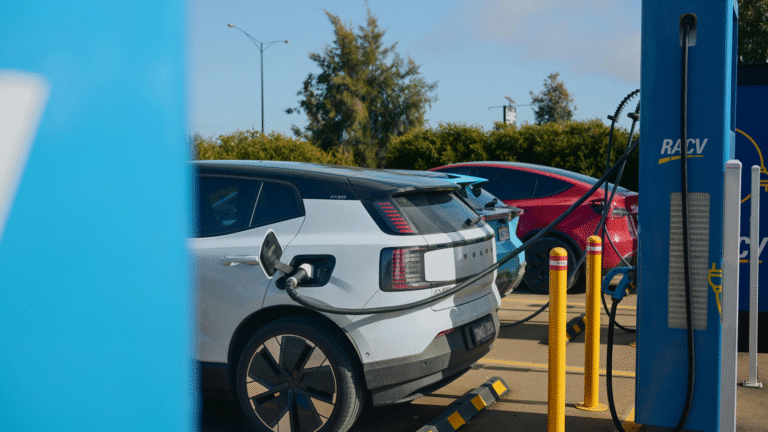By 2025 corporate EV fleets have moved from pilot projects to large-scale deployments in many sectors. That shift has produced practical lessons in procurement, depot electrification, workforce training and total-cost modelling. This article summarises the major trends and the operational lessons fleet managers need to apply now.
Table of Contents
- Major 2025 trends in corporate fleet electrification
- The practical TCO case: where electrification wins now
- Depot electrification: common pitfalls and best practices
- Workforce, maintenance and safety: evolving needs
- Procurement patterns and supplier relationships in 2025
- FAQs
1. Major 2025 trends in corporate fleet electrification
- High-mileage sectors lead (logistics, delivery, utilities) because operational savings are fastest.
- Bundled procurement: companies group vehicle + charger + energy contracts for predictable costs.
- Increased use of batteries and on-site storage to manage demand charges and smooth grid impacts.
- Stronger second-life planning for batteries and resale channels as fleet turn-over increases.
The trend is toward integrated, energy-aware fleet solutions rather than isolated vehicle buys.
2. The practical TCO case: where electrification wins now
Electrification is compelling where:
- Vehicles run many kilometres per day (lower energy and maintenance per km).
- Depot charging can be centralised and optimised with demand management.
- Government grants or tax treatments (FBT concessions for company cars) apply.
Smart modelling that includes charging infrastructure, demand charges and potential grid upgrades reveals true fleet economics.
3. Depot electrification: common pitfalls and best practices
Pitfalls
- Underestimating network upgrade costs and lead times.
- Neglecting load management, which leads to oversized initial utility bills.
- Choosing incompatible chargers or poor maintenance contracts.
Best practices
- Stage deployment with battery buffers and managed charging.
- Engage networks early for capacity planning.
- Use pilot programs to validate vehicle/spec choices against real routes.
A staged, data-driven approach minimises surprises and capex spikes.
4. Workforce, maintenance and safety: evolving needs
- Technician retraining for HV safety and battery diagnostics is essential.
- Predictive maintenance using telematics reduces downtime.
- New vendor partnerships for battery health, disposal, and second-life reuse are increasingly part of procurement.
People and process are as important as the vehicles themselves.
5. Procurement patterns and supplier relationships in 2025
Large fleets negotiate bundled deals that include charging, warranty, and guaranteed residual values. Suppliers offering whole-of-life services (financing, energy, maintenance) win more tenders. Transparency in residual assumptions is critical for accurate total-cost models.
FAQs
Q: How long before a fleet sees payback?
A: Payback varies by duty cycle. High-utilisation fleets can see positive TCO in a few years; low-mileage fleets take longer.
Q: Do fleets need big grid upgrades?
A: Sometimes — but staged installs, battery buffers and smart charging often delay or avoid costly upgrades.
Q: Should fleets prefer one EV brand?
A: Many fleets diversify by duty cycle — smaller vehicles for urban runs, larger ones for long routes — and negotiate multi-brand support to reduce supplier risk.
Conclusion
Corporate fleets are the engine of EV scale-up: they create demand certainty, justify depot chargers and accelerate market maturity. The 2025 lessons are clear — model everything, stage deployments, partner for whole-of-life services and invest in people. Fleets that approach electrification as an integrated energy and operations project will capture the biggest benefits.
Meta description: Corporate fleet electrification in 2025: high-mileage sectors lead, depot electrification best practices, and procurement lessons for whole-of-life fleet success.
